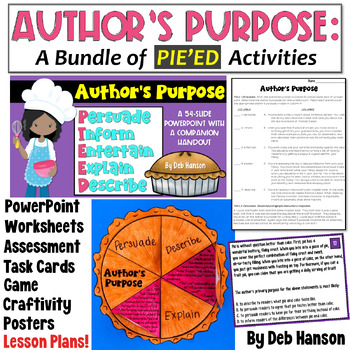As teachers, our confidence soared as State Assessment time approached! When assessment time arrived, however, my heart sank. As an ESL teacher, I was providing the accommodations of reading the test questions aloud to limited-English proficient students. I felt more and more defeated with each test question I read aloud that was related to author's purpose. I realized that the test authors did not limit the answer choices to persuade, inform, and entertain. Rather, I saw answer choices that included words like explain, describe, share, and occasionally even illustrate.
Furthermore, I realized that sometimes, the test authors required students to differentiate the main idea. For example, answer choices might include:
A. To inform the reader about the formations found in caves
B. To describe the formations in a cave
C. To entertain readers with a story about a cave
D. To inform the reader about how caves are formed
It was then that I set out to do more than just teach the basic PIE method for Author's Purpose! I happened upon the PIE'ED method online, and from there created several resources to support this approach and ultimately increase the rigor for my upper elementary students.
I used my newly created materials the following school year, and was encouraged by what I saw! Whereas in previous years, students often seemed to "skim" a passage to decide which of the PIE purposes best fit the passage, once I started using this new approach, I observed students reading the passages more carefully. When testing time arrived again, I felt assured that I had done everything in my power to set my students up for success.
What is the PIE'ED method of Author's Purpose?
P-persuade (to convince the reader of something)
I-inform (to provide the reader with information)
E- entertain (to provide a story readers will enjoy - it can be sad, scary, or happy, and often includes dialogue)
E-explain (to give the reader directions or explain a process)
D-describe (to appeal to most or all of the reader's five senses)Click on the image below to check out my Author's Purpose Bundle!
Thanks for stopping by!





